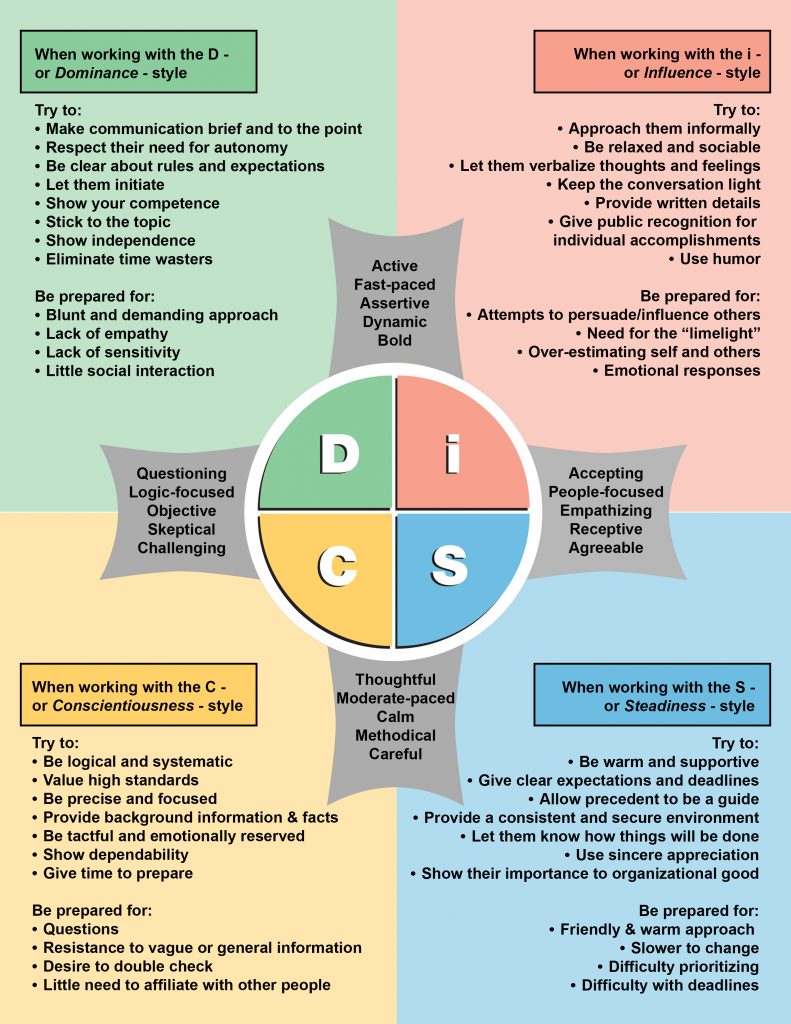Communication has and always will be a key source of establishing relationships and connections with the people around you. Everyone has their own style of how they communicate, which can sometimes lead to underlying issues with miscommunication.
What happens when miscommunication takes place can often times blow up preventable and manageable issues into something bigger. This comes back to obstacles of misinterpretations and assumptions that can occur if clear and concise communication doesn’t take place.
So how can we combat these communication-based obstacles? Here are a few things to pay extra attention to when communicating with different groups and/or individuals:
Understand the Different Styles
You may have come across many variations of different communication styles and personality types throughout your professional and personal experiences. There are people you get along with and there are people you just don’t click with, and that’s okay. You won’t get along with everyone, and in a worst case scenario you will find yourself in a position where you have to work with someone you clash with.
What’s important to figure out is understanding where the lines are for those you are in constant communication with, particularly when in a work setting. In fact, there are so many variations of what people consider the “basic communication styles” that when you search, there’s no one specific set of answers. And, for the most part, while people have most likely identify most with one type of style, most people are combinations of at least 2 of however many “types” there are.
Here’s an example using the DiSC personalities and suggestions on the best ways to communicate with people who fall under the individual categories:

Other groups of Communicator ‘Types’ to read about:
- Analytical, Intuitive, Functional, Personal (click here)
- Passive, Aggressive, Passive-Aggressive, Assertive (click here)
Practice Active Listening
Being an active listener is a way of telling someone that you care about what they have to say, you’re engaged in the conversation and have the ability to show empathy to the speaker, and you are ready to be of support where you can.
Prepping yourself to be an active listener, in any kind of situation (social, work, etc.) can be as simple as:
- Making eye-contact, remain facially engaged
- Asking questions and paraphrasing to show your understanding or if you need clarification
- Creating a space of non-judgment
- Just letting the person say what they need to (i.e. don’t interrupt, don’t “one-up” their issue, don’t provide an opinion/advice until asked)
Make Communication a Two-Way Street
Everyone involved in a communication-heavy situation, like a project or team meeting for example, should feel a sense of openness when it comes to expressing their thoughts, ideas, feedback, and expectations. Everyone’s voice matters.
If you are the leader of the conversation at hand, make sure there’s time and energy put towards hearing from your team, letting them ask questions, and setting the tone for a collaborative environment.
If you are an audience or team member, hear out everything that needs to be said, and set an example for what a good active listener looks like. When the appropriate time comes, speak your mind, ask questions, and you’ll have the opportunity to be heard.
You can really only control the kind of communicator you are and let people know how you would prefer to be communicated with. If you make those clear, you can start setting yourself up for the communication culture you are a part of to make sure you are doing your part in preventing unnecessary assumptions and miscommunications as best you can. While it’s easy to say certain situations could be prevented, just remember that “avoidable” issues will happen, it’s just a matter of how you choose to handle and dismantle the challenge at hand to prevent unideal repetition.
Sometimes it takes reading the situation and even stepping outside of your comfort zone to get what you need to say to the people who need to hear it.

